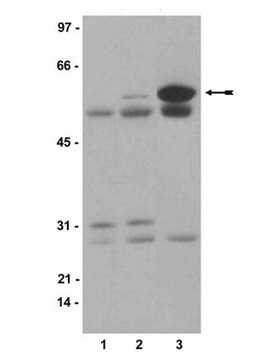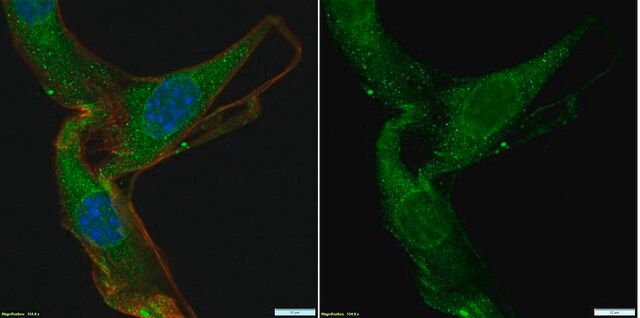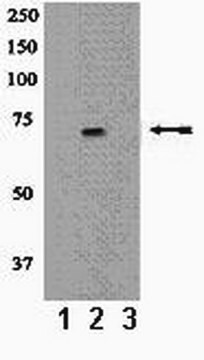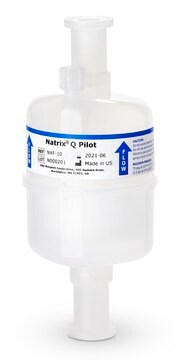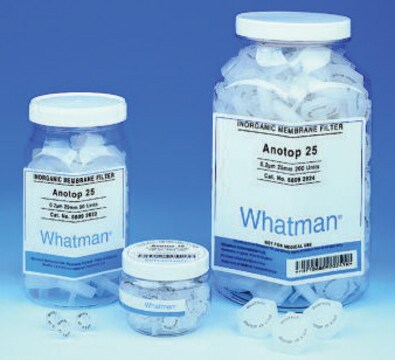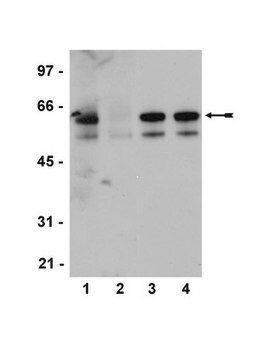04-857
Anti-phospho-Src family (Tyr416) Antibody, clone 2N8, rabbit monoclonal
culture supernatant, clone 2N8, Upstate®
Synonyme(s) :
Proto-oncogene tyrosine-protein kinase Src, Proto-oncogene c-Src, pp60c-src, p60-Src
About This Item
Produits recommandés
Source biologique
rabbit
Niveau de qualité
Forme d'anticorps
culture supernatant
Type de produit anticorps
primary antibodies
Clone
2N8, monoclonal
Espèces réactives
vertebrates, mouse
Fabricant/nom de marque
Upstate®
Technique(s)
western blot: suitable
Isotype
IgG
Numéro d'accès NCBI
Numéro d'accès UniProt
Conditions d'expédition
dry ice
Modification post-traductionnelle de la cible
phosphorylation (pTyr416)
Informations sur le gène
human ... SRC(6714)
Description générale
Spécificité
Immunogène
Application
Signaling
Cytoskeletal Signaling
A 1:1000 dilution of this lot detected phospho-c-Src in RIPA lysates from COS cells transfected with active Src (Cat # 21-115) (Figure A).
Immunoprecipitation:
A previous lot detected endogenous phospho-c-Src immunoprecipitated from NIH/3T3 RIPA lysates with anti-Src, clone GD11 agarose beads (Cat # 16-186) (Figure B).
Qualité
Description de la cible
Liaison
Forme physique
Stockage et stabilité
Handling Recommendations: Upon receipt, and prior to removing the cap, centrifuge the vial and gently mix the solution. Aliquot into microcentrifuge tubes and store at -20°C. Avoid repeated freeze/thaw cycles, which may damage IgG and affect product performance.
Remarque sur l'analyse
RIPA cell lysate
Informations légales
Clause de non-responsabilité
Vous ne trouvez pas le bon produit ?
Essayez notre Outil de sélection de produits.
Code de la classe de stockage
12 - Non Combustible Liquids
Classe de danger pour l'eau (WGK)
WGK 1
Point d'éclair (°F)
Not applicable
Point d'éclair (°C)
Not applicable
Certificats d'analyse (COA)
Recherchez un Certificats d'analyse (COA) en saisissant le numéro de lot du produit. Les numéros de lot figurent sur l'étiquette du produit après les mots "Lot" ou "Batch".
Déjà en possession de ce produit ?
Retrouvez la documentation relative aux produits que vous avez récemment achetés dans la Bibliothèque de documents.
Notre équipe de scientifiques dispose d'une expérience dans tous les secteurs de la recherche, notamment en sciences de la vie, science des matériaux, synthèse chimique, chromatographie, analyse et dans de nombreux autres domaines..
Contacter notre Service technique